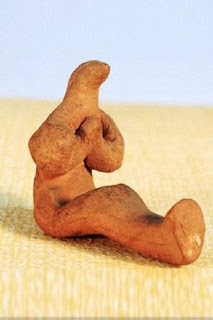A Very Brief History of Archaeological Survey of India (ASI)
ASI was created in 1861, an agency created during the days of British Colonialism for archaeological excavation and conservation of India monuments. Interestingly the Survey was briefly suspended from 1865 to 1871, which is the most hypocritical joke of history in my view.
ASI was created in 1861, an agency created during the days of British Colonialism for archaeological excavation and conservation of India monuments. Interestingly the Survey was briefly suspended from 1865 to 1871, which is the most hypocritical joke of history in my view.
1865 was the time when the British government passed the Indian Forest Act that extended British Colonial claims over the forests of India. And due to the onset of the confederacy movement in the United States 'The eyes of a desperate Britain fell on India, and as “King Cotton” destroyed
one country, it gave birth to another." (Ref: https://www.english.uga.edu/sites/default/files/2009-2010_Barnett_Mays_John.pdf) But they didn't have money for conserving their prized possession, the country of India.
A Prolific Writer - Prof. B.B. Lal
I'm digressing away from the topic of this post, Professor Brij Basi Lal, the juggernaut of Indian archaeology. He was the Director-General of Archaeological Survey of India (ASI) from 1968 to 1972 and was awarded Padma Bhushan by the Government of India in 2000.
Interestingly, the first two Indian Director-Generals of ASI after Mortimer Wheeler, from 1948 to 1953 died young. And the third Director-General of independent (partitioned) India from 1953 to 1968, Madho Sarup Vats, didn't leave many works which were for the consumption of the general masses. His only book available on the excavations of Harappa is from the excavations during the years 1920-21 and 1933-34. He also died in 1981, before the advent of social media where we could have got the opportunity to hear his words on the Indus Valley Civilization.
B.B. Lal is the only living archaeologist who has published numerous books on the subject of ancient India. Through his books, he brings to light the story of continuity from ancient Indic civilizations into modern India. I only discovered his books and videos a few years back. He is like the Indiana Jones of India without all the fanfare and hoopla.
He is one of the few vocal archaeologists who have tried to share the continuity of Indic civilization. Any such attempt is generally hijacked quickly by extremists (whether right or left-winger) and maligned with the hypothesis that's are not based on any archaeological or scientific evidence. All this noise needs a calm voice that can separate fact from fiction. And someone who can communicate it to the general public is even rarer.
I was pleasantly surprised to see a growing generation of Indic scholars who are quietly pursuing their respective fields to understand the traditions and historical continuity of Indic civilization. To name a few we've Sanjiv Sanyal, Prof. Michel Danino, Dr. Niraj Rai, Jay Lakhani, Prof. Mark Kenoyer, Raj Vedam, Sahana Singh, David Frawley and of course B.B. Lal.
Here are some of the seals and figurines from various Indus-Saraswati Valley Civilization depicting various aspects of continuity of culture from Harappan times to modern India.
Please visit Harappa.com to watch a video of excavation sites, pictures of various seals and other scholarly information on this great civilization.
He is one of the few vocal archaeologists who have tried to share the continuity of Indic civilization. Any such attempt is generally hijacked quickly by extremists (whether right or left-winger) and maligned with the hypothesis that's are not based on any archaeological or scientific evidence. All this noise needs a calm voice that can separate fact from fiction. And someone who can communicate it to the general public is even rarer.
I was pleasantly surprised to see a growing generation of Indic scholars who are quietly pursuing their respective fields to understand the traditions and historical continuity of Indic civilization. To name a few we've Sanjiv Sanyal, Prof. Michel Danino, Dr. Niraj Rai, Jay Lakhani, Prof. Mark Kenoyer, Raj Vedam, Sahana Singh, David Frawley and of course B.B. Lal.
Here are some of the seals and figurines from various Indus-Saraswati Valley Civilization depicting various aspects of continuity of culture from Harappan times to modern India.
 |
| Proto-Siva on an Indus Valley Seal |
 |
| Swastika symbol from Indus Valley excavation |
 |
| Yogic Posture in Harappan figurine |
Comments
Post a Comment